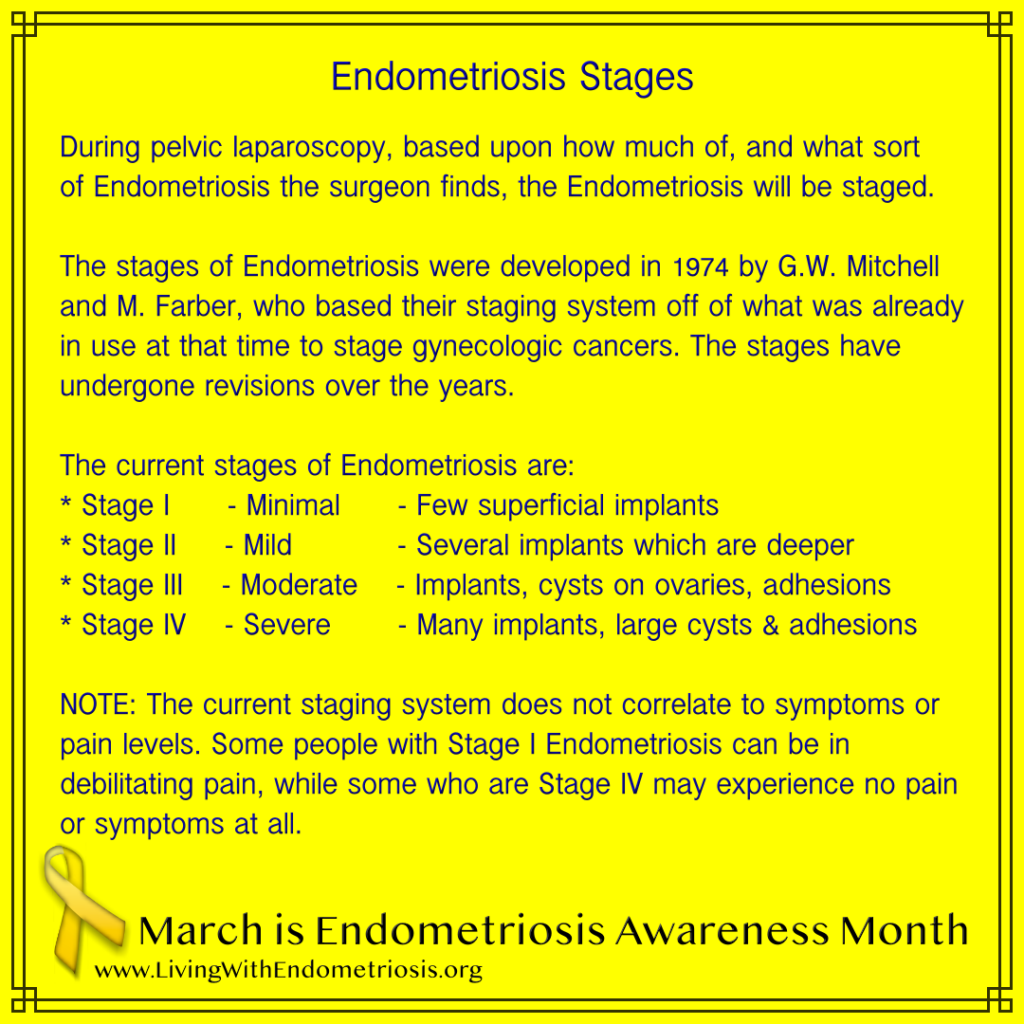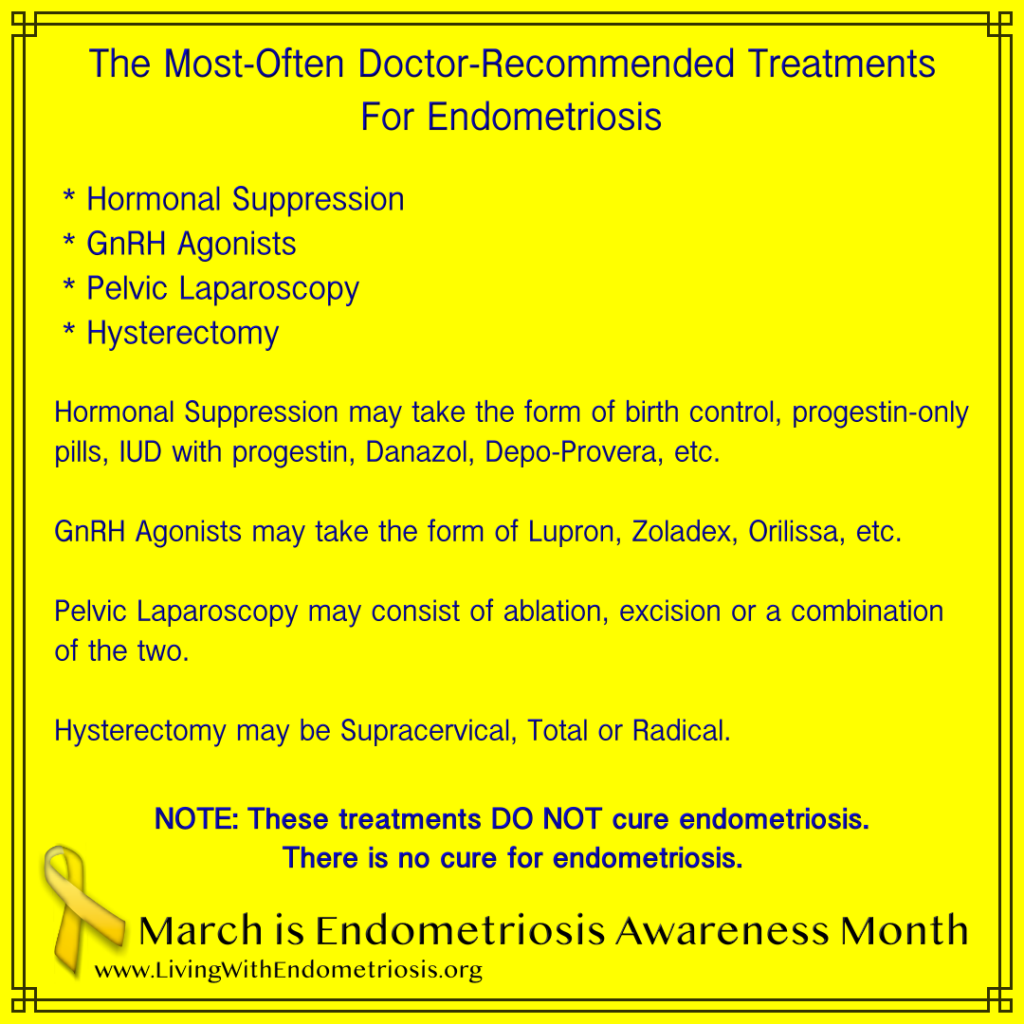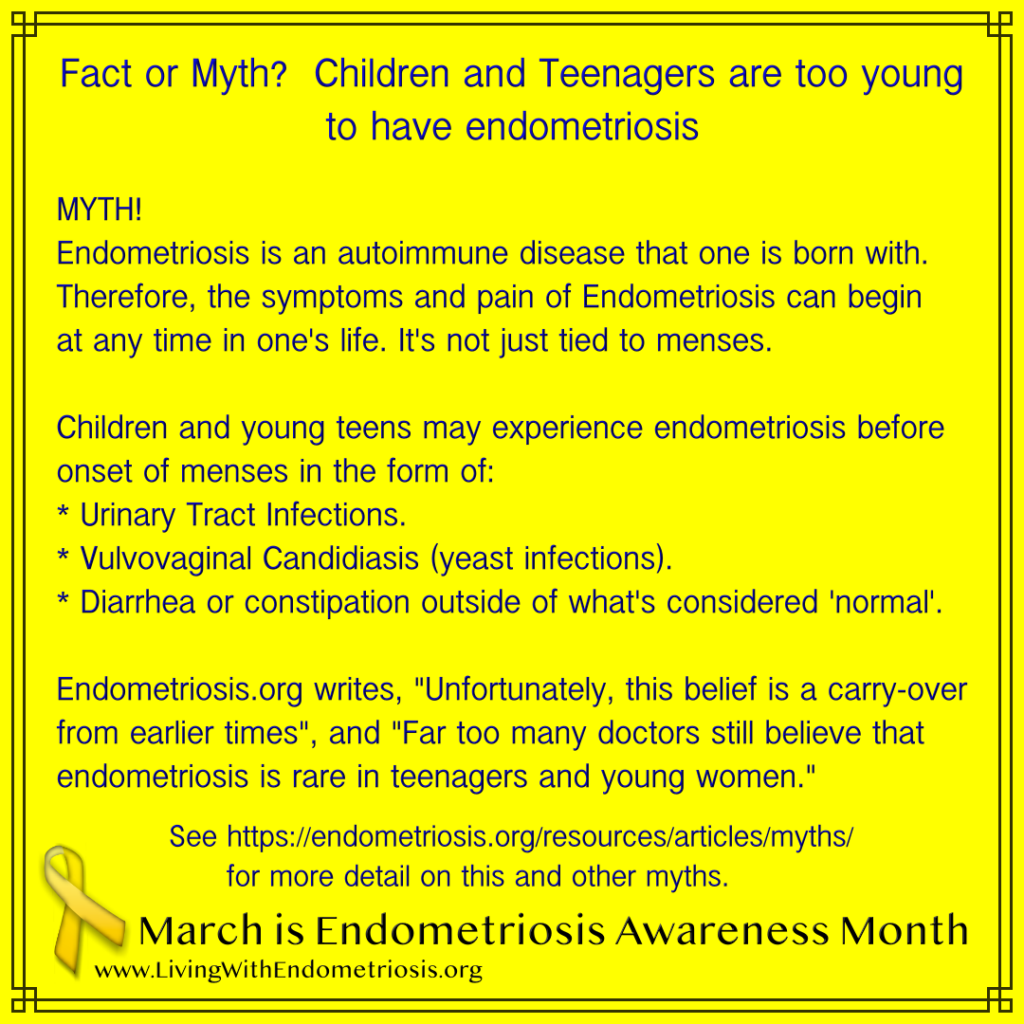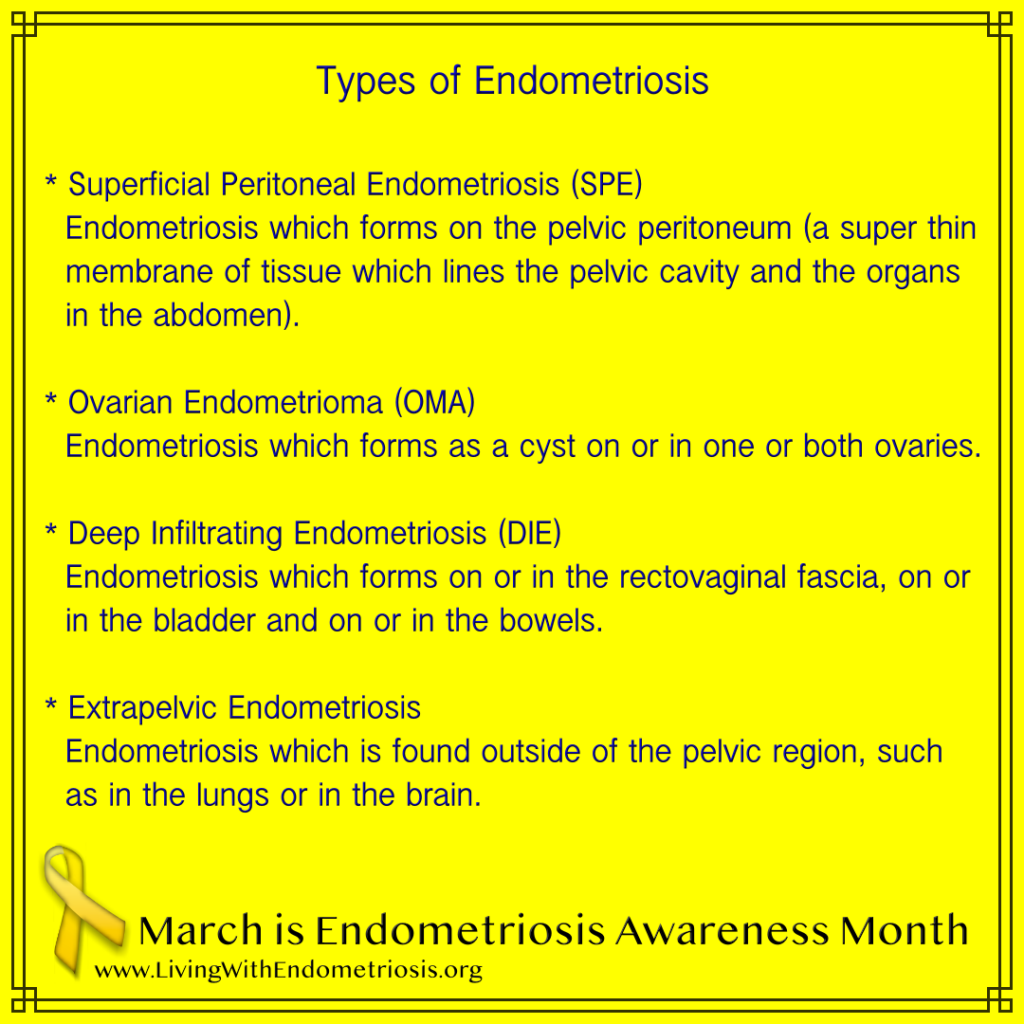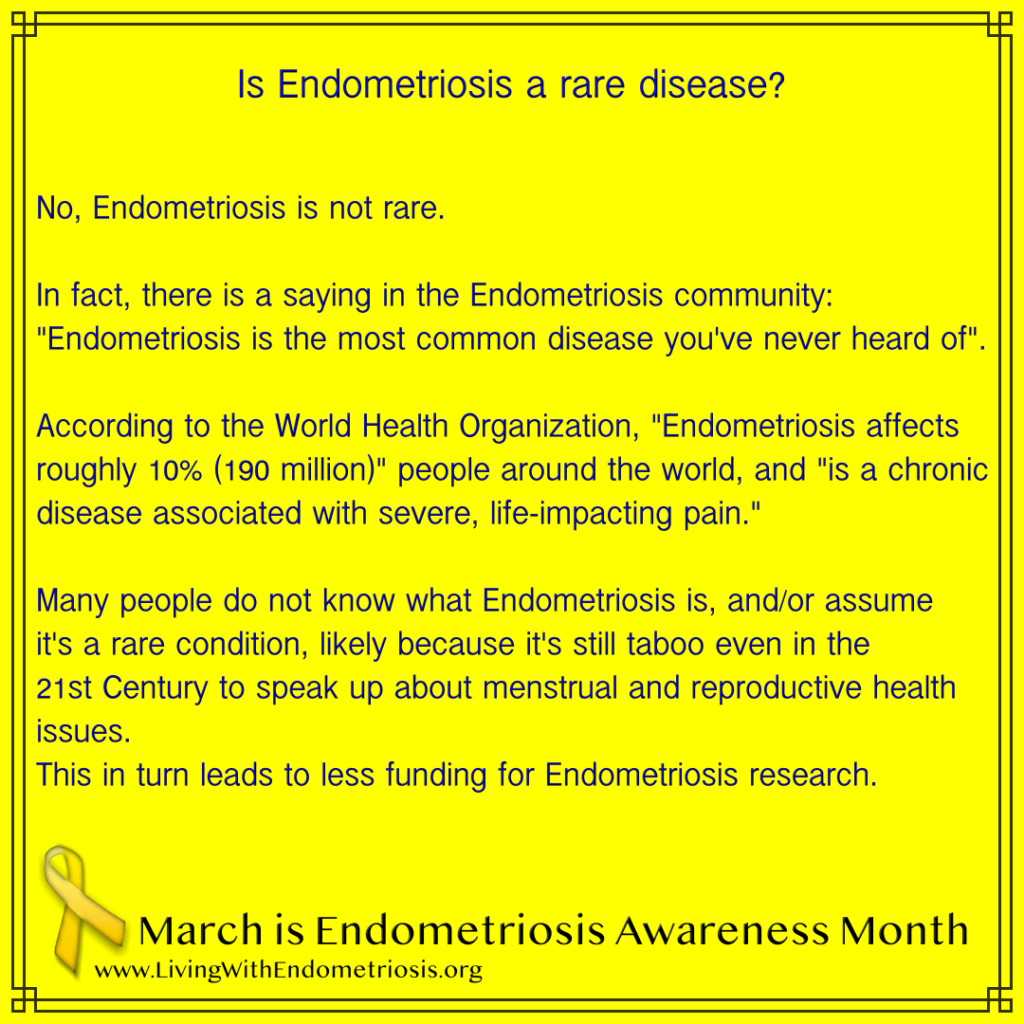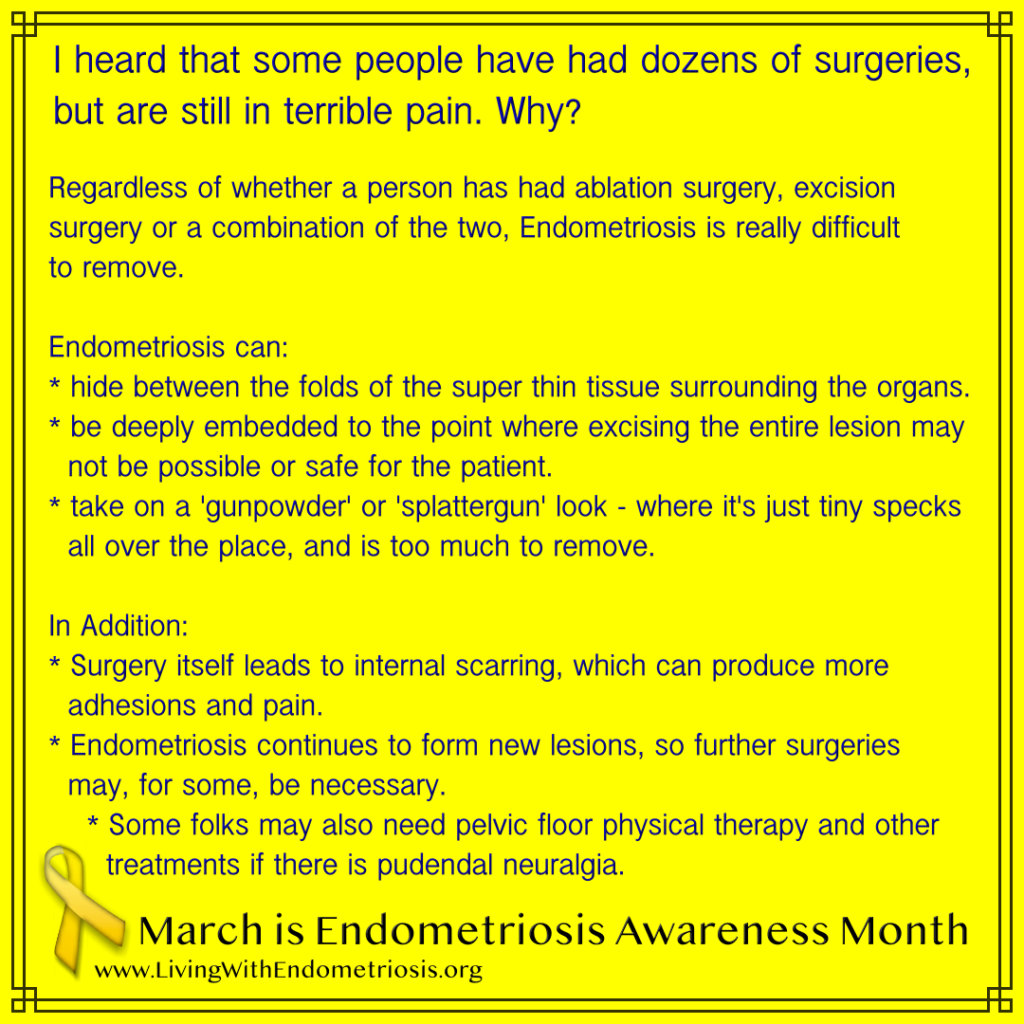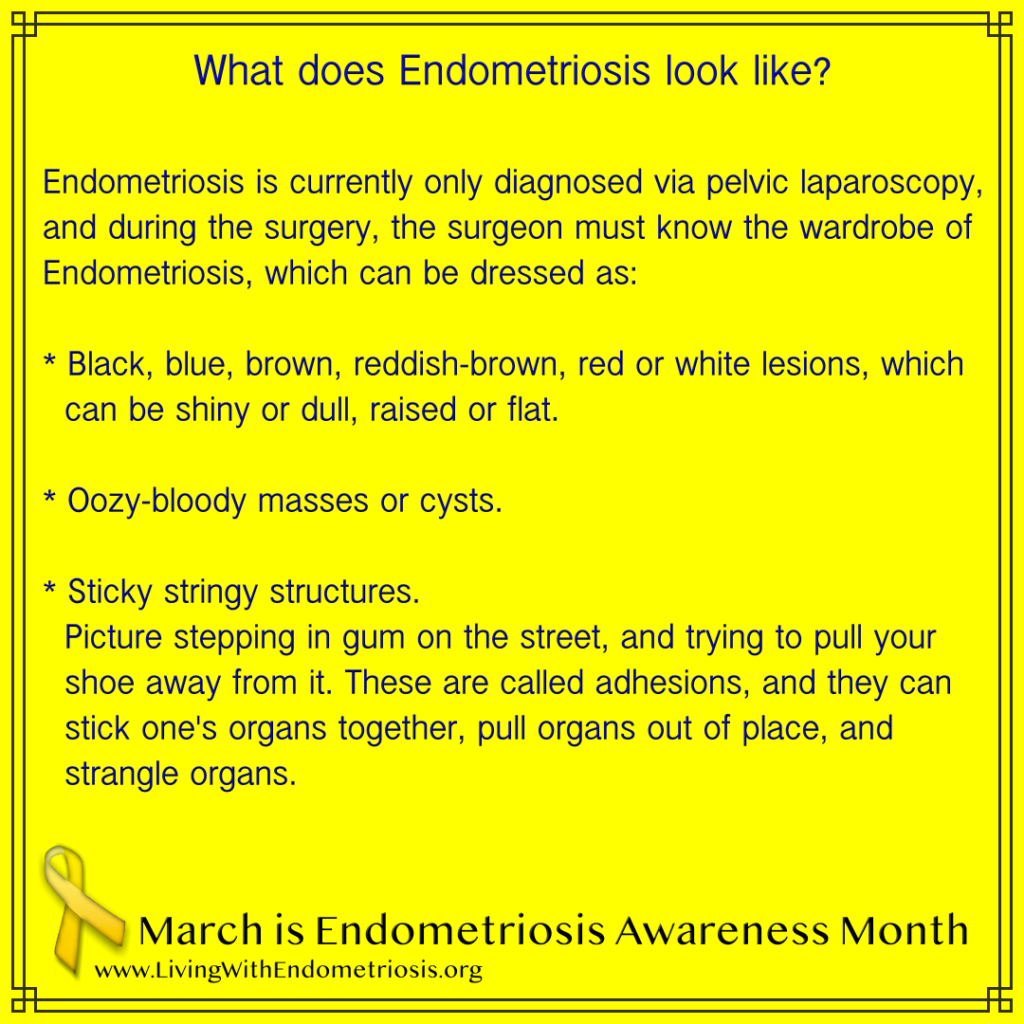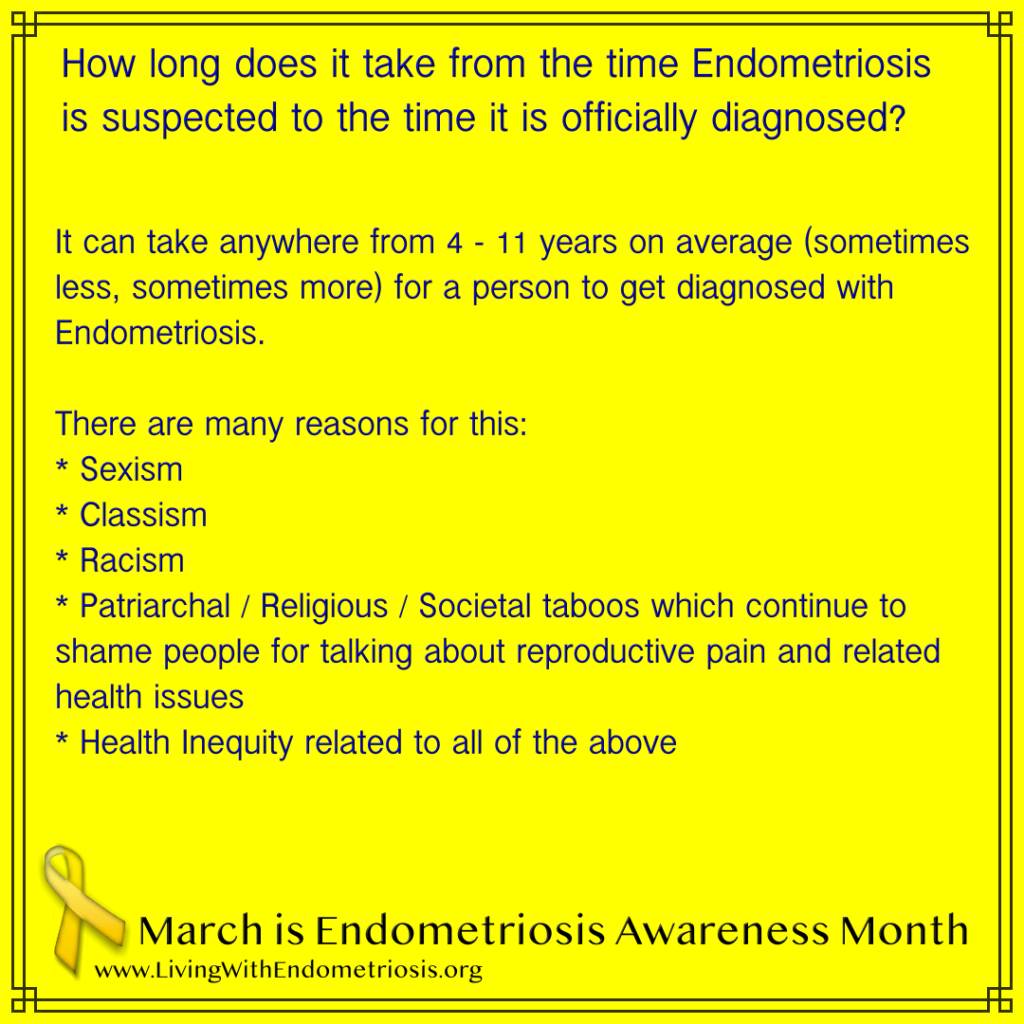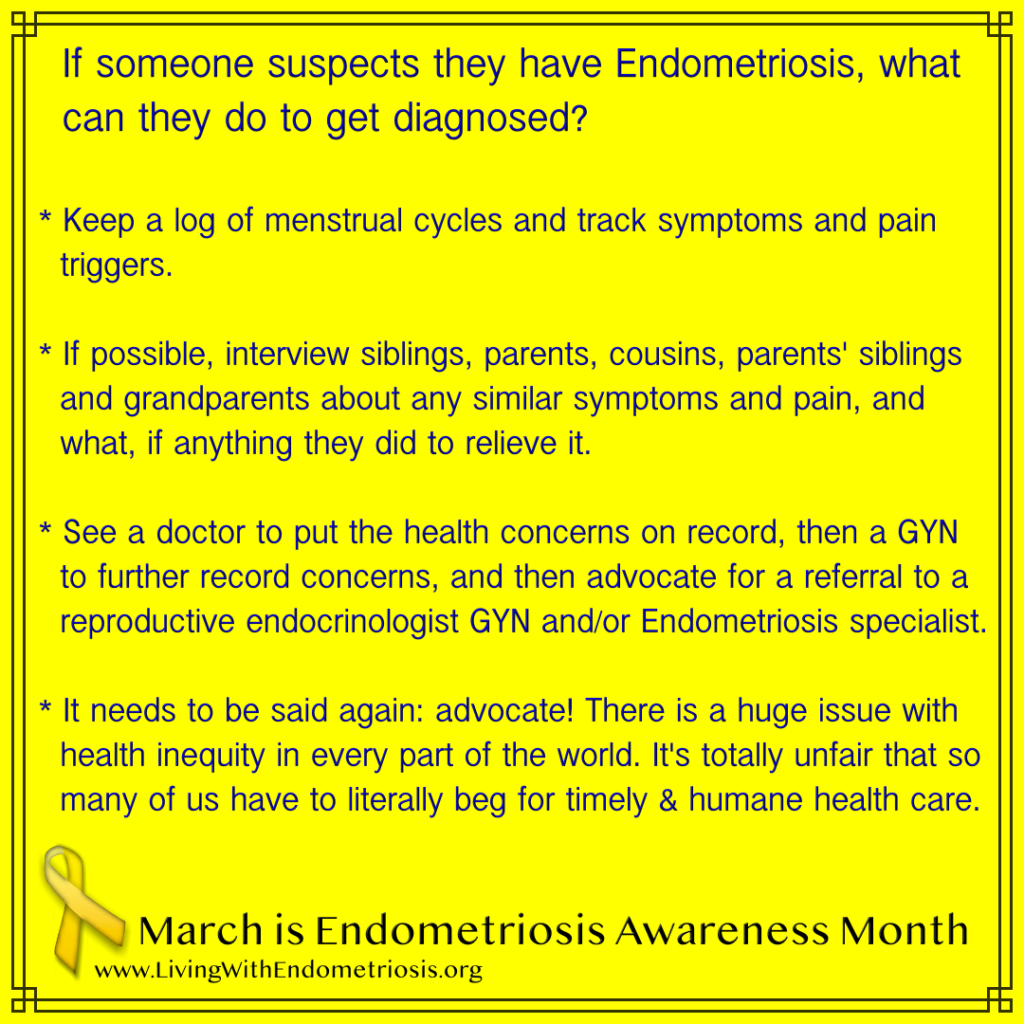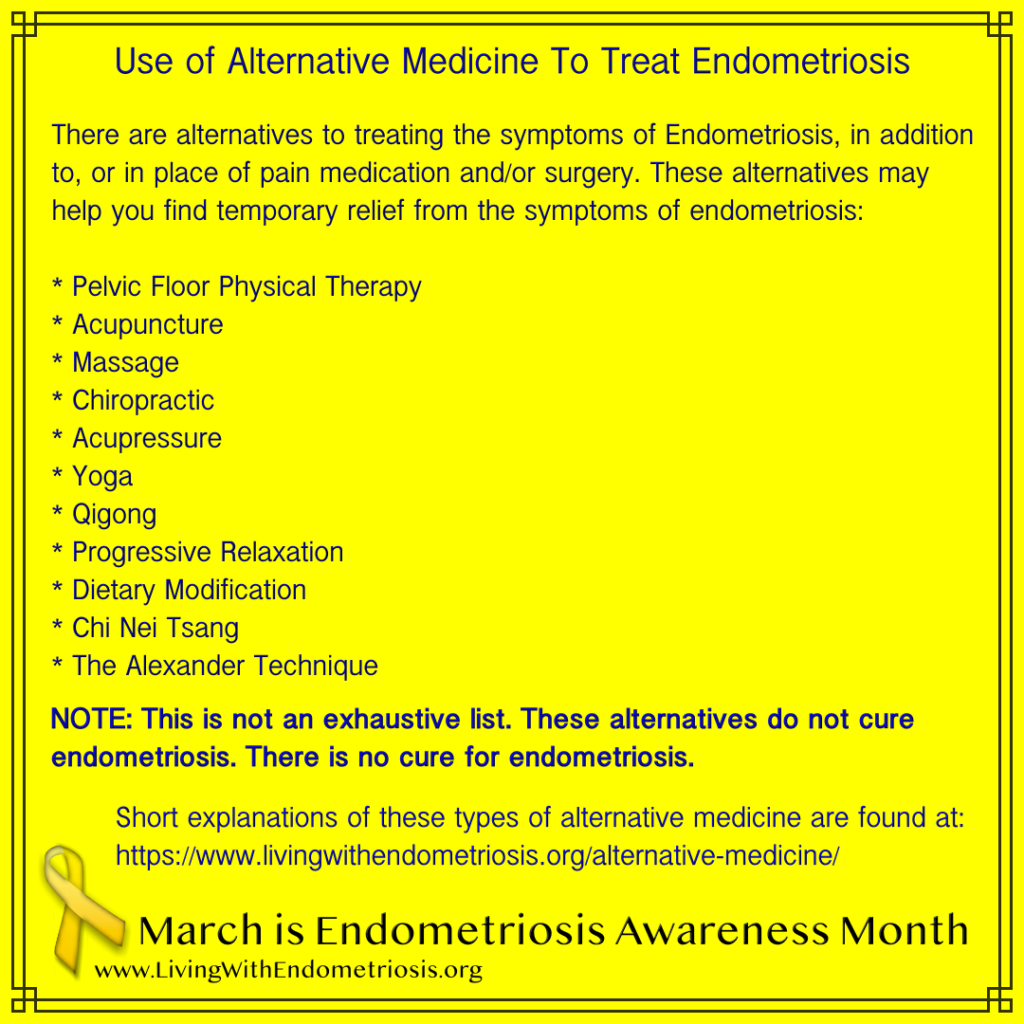
Use of Alternative Medicine To Treat Endometriosis
There are alternatives to treating the symptoms of Endometriosis, in addition to, or in place of, pain medication and/or surgery. These alternatives may help you find temporary relief from the symptoms of endometriosis:
- Pelvic Floor Physical Therapy
- Acupuncture
- Massage
- Chiropractic
- Acupressure
- Yoga
- Qigong
- Progressive Relaxation
- Dietary Modification
- Chi Nei Tsang
- The Alexander Technique
NOTE: This is not an exhaustive list. These alternatives do not cure endometriosis. There is no cure for endometriosis.
Short explanations of these types of alternative medicine are found at:
https://www.livingwithendometriosis.org/alternative-medicine/
